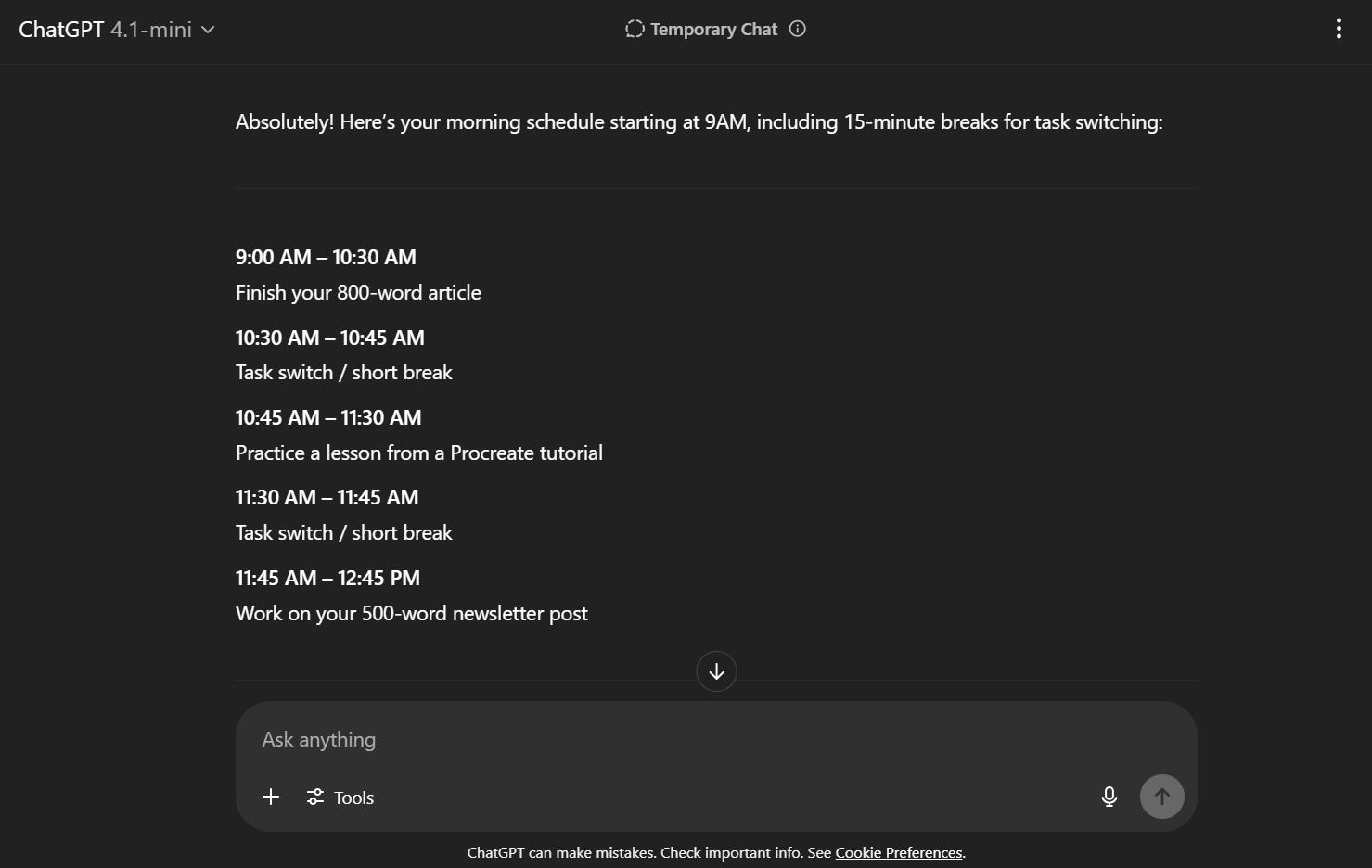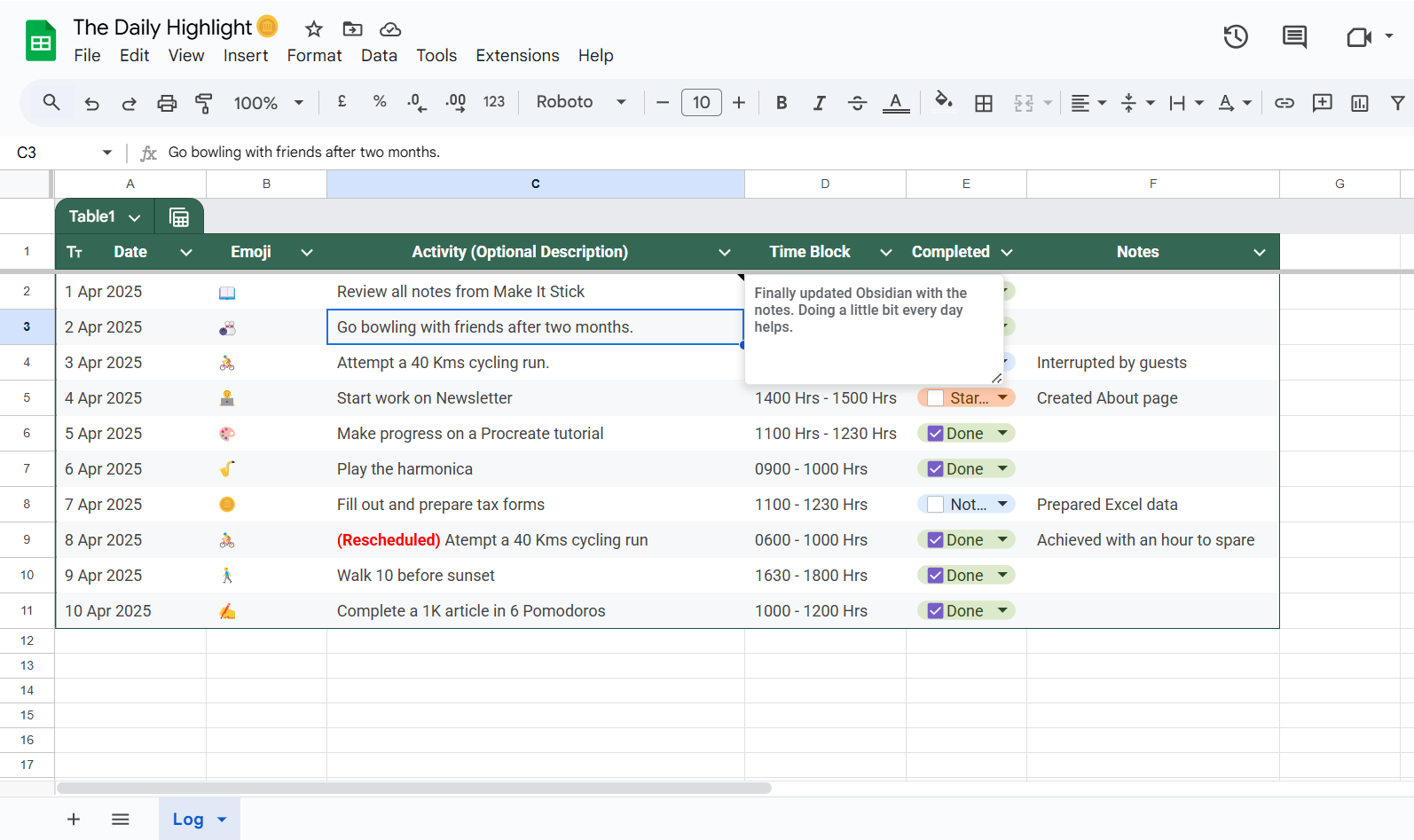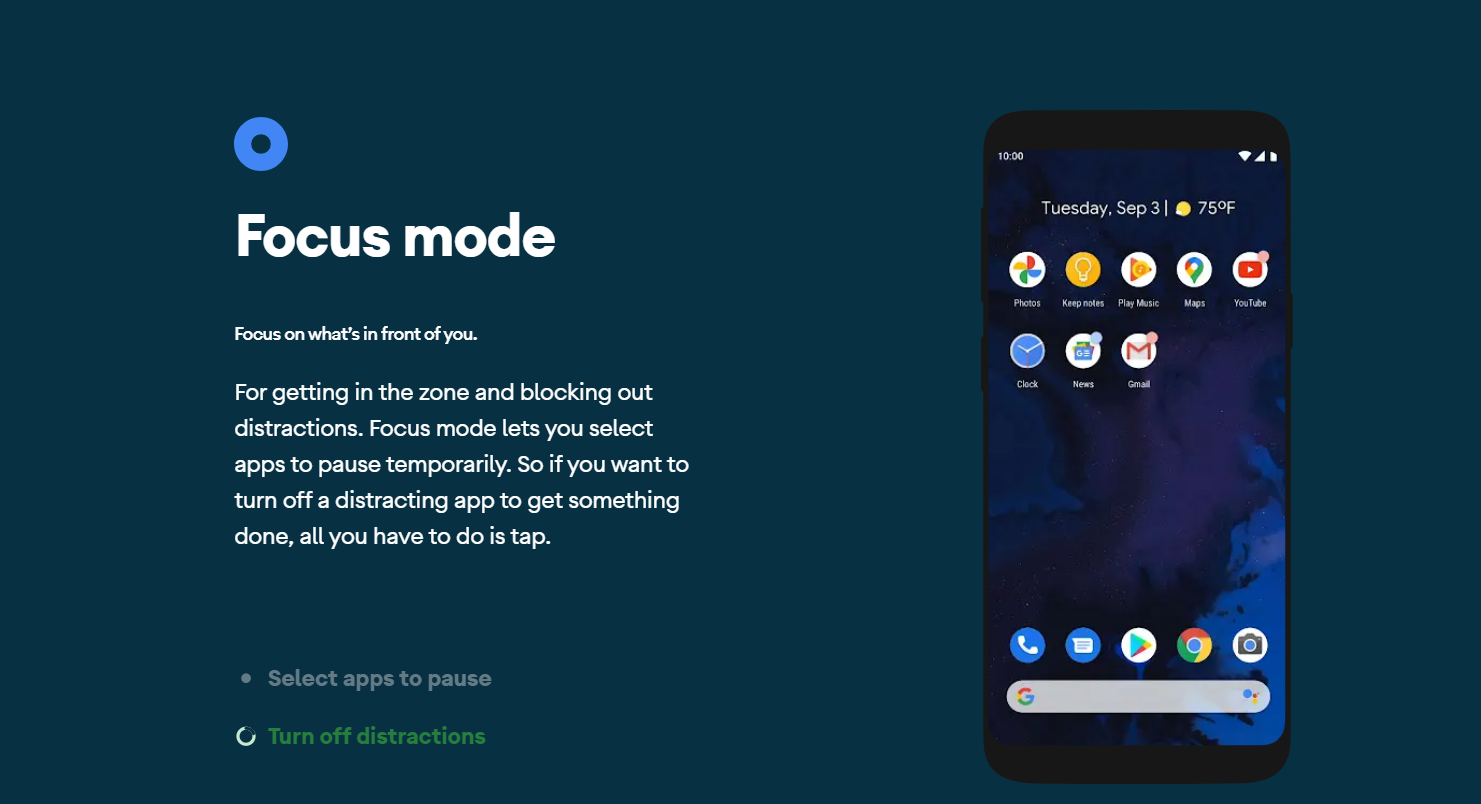Every morning is a fresh start. But just like the startup folder on a PC, I don’t want to get weighed down by too much stuff launching in my scattered mind. Planning the night before gives me a head start and lets me hit the ground running.
Why Planning My Day the Night Before Boosted Momentum
That groggy feeling after waking up means my brain isn’t ready for heavy decision-making yet. Planning the night before taps into a powerful mental trick: the subtle benefits of sleep. While we sleep, our subconscious processes priorities for the next day, making us efficient at certain cognitive tasks. It’s like a runner getting into position before the starter gun.
Instead of fumbling with my to-do list over coffee, I know exactly where to start. I don’t give my brain the chance to debate the first task; it’s done. Clarity reduces friction and jumpstarts my focus.
You don’t have to look at your mobile or switch on the PC, but digital tools can make this easier. I experimented with using ChatGPT to set up a morning routine. Lately, I have shifted this exercise to the prior evening.
This routine can save you 15 to 30 minutes of morning deliberation and channel that energy into productive work. But you don’t have to follow my system. Your current task planning habits can work just as well—just experiment with it the night before and see if it helps. You can also use the wonderful benefits of paper for to-do lists and stay away from screens.
Morning Planning Can Provoke Procrastination
Planning in the morning often hides procrastination as productivity. Willpower is lowest right after waking. Facing an overflowing inbox, buzzing Slack, or a huge, unclear task list feels overwhelming. Our brains don’t know the boundaries between the real and the digital world anymore, so we procrastinate.
You might say, “I’ll just check email quickly,” and suddenly 45 minutes vanish knee knee-jerking to others’ agendas instead of your own. Or you get stuck staring at a daunting task list and surrender to easier chores like organizing your desktop.
Morning planning often turns into reactive work. Notifications and urgent requests hijack focus before you stack your priorities.
Some of the digital tools I use have worsened this in different ways:
Notification tsunami: Email and messenger apps like WhatsApp flood me with unread threads, derailing focus before I can sit down to plan the day.
The endless list trap: Opening a massive, unsorted task list in Asana without clear priorities causes paralysis.
Searching for context: Trying to remember why I added tasks or where the important documents are.
Planning at night acts as a balm against this. I can set my day proactively, before digital chaos and distractions take over.
Practical Tips for Planning Your Day the Night Before (The Digital Way)
Getting started is simple. Use the general structure to build your own consistent 5 to 10-minute evening ritual. Remember, the tools don’t matter as much as the system or habit.
Brain Dump & Capture
Clear your mind by jotting down stray thoughts or tasks.
You can use apps like Apple Notes, Google Keep, or Evernote for quick notes. If you prefer, recording your thoughts as a voice journal is a time-saving experiment worth a try.
Review & Prioritize
Open your main task manager. It can be any popular app of your choice like Todoist, Microsoft To Do, or TickTick.
Review new notes, your task list, and tomorrow’s calendar. Then, pick your Most Important Task (MIT) and flag it clearly. I call it My Daily Highlight, and I categorize it as something Urgent, Satisfying, or Joyful.
Limit your other daily tasks to 3 to 5 critical items to reduce overwhelm. Use “Someday” lists or defer less urgent tasks.
Time Blocking
Use common apps like Google Calendar, Fantastical, Apple Calendar, or Motion. Drag or type tasks into your calendar with realistic time slots, including buffers. Always schedule work, breaks, exercise, and lunch. Treat them as appointments.
Color-code tasks for quick visual reference (e.g., blue for deep work, green for meetings, orange for rest, etc).
Prepare Tomorrow’s Workspace
Close tabs and apps you won’t need tomorrow.
Open key documents or tools related to your first tasks and save links in your calendar or task notes. If I am writing an article, I bookmark them in a temporary folder called “Start Here.”
When you start on your important tasks, activate Focus Modes (iOS/macOS) or Digital Wellbeing/Do Not Disturb (Android) to silence distractions during work blocks.
I mention digital work here. These tips apply to everything. For instance, if you go to the gym in the morning, prep your gear the night before.
Final Check & Commitment
Scan your calendar and tasks to ensure your plan is focused and realistic. Close your distracting apps and mentally commit to the ultimate productivity app we all have — the clock.
Planning at night isn’t just about writing a to-do list, it’s a strategic habit. Using digital tools to capture, prioritize, schedule, and prepare before sleep gives our brains enough time to visualize the next day. Also, remember that if life happens, you can always microplan and switch things up. You’ll trade overwhelm for clarity and morning stress for momentum.











Leave a Comment
Your email address will not be published. Required fields are marked *